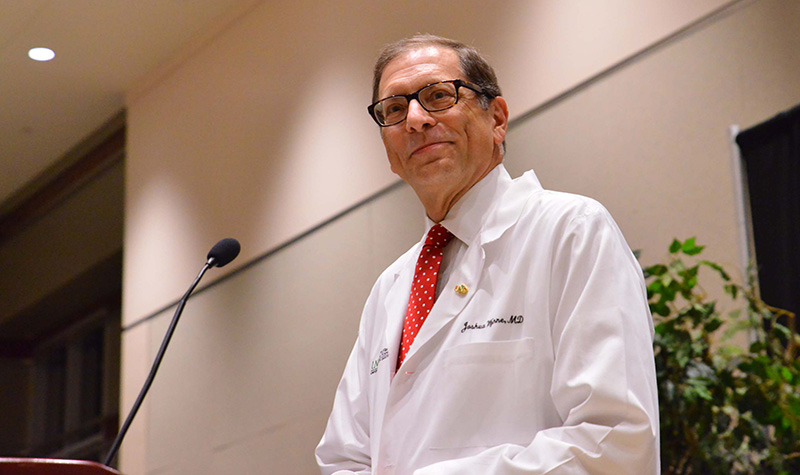From the Dean
 A recent visit to my granddaughters’ local library got me thinking about health provider education in the future (really!). The little one had pulled me up to an area on the second floor of the library where there was a balcony overlooking the rest of the children’s area. The first thing that impressed me as I gazed out was how many children were present (countering the impression that libraries are obsolete). But the second impression may help explain the first—as I looked over the crowd, some children were playing games with each other, some were reading books, and some were using various electronic devices like computers, tablets, and cell phones. But all were actively engaged in doing something, even if the method of engagement differed (although for a few, that “something” was bickering with a “colleague”!).
A recent visit to my granddaughters’ local library got me thinking about health provider education in the future (really!). The little one had pulled me up to an area on the second floor of the library where there was a balcony overlooking the rest of the children’s area. The first thing that impressed me as I gazed out was how many children were present (countering the impression that libraries are obsolete). But the second impression may help explain the first—as I looked over the crowd, some children were playing games with each other, some were reading books, and some were using various electronic devices like computers, tablets, and cell phones. But all were actively engaged in doing something, even if the method of engagement differed (although for a few, that “something” was bickering with a “colleague”!).
And as we think about the future directions of health care education (and probably all of higher education for that matter), maybe that’s where things are headed—a hybrid approach of engagement and learning that likely will vary from person to person. For some, a more traditional approach may be preferable; others will prefer an approach where they are more in control of when and how they learn. But for all members of the health care team, learning how to work together efficiently and effectively will be crucial—and that’s hard to do by yourself! Thus, using the analogy of the kids I saw playing together, it will always be vital for providers to use the lessons they learned in the sandbox—adapting to new environments or technologies, finding the best ways of integrating information, and minimizing conflict. And while we certainly can model such professional behavior and expect our trainees to follow suit, we really can’t change a student’s inner convictions and values. That’s where the admission process comes into play—we need to try to identify those students who seem to share our high expectations for proper professional performance even before they matriculate into our programs.
We designed the School of Medicine & Health Sciences building in Grand Forks with this in mind. The two key pedagogical concepts in the layout and design of the building were “flexibility” and “collaboration.” But we tried not to be tied to the past; our library, for example, has relatively few books but dozens of computers throughout the building, with our librarians embedded in and working with different educational groups on multiple floors.
All of this melds quite nicely into the evolving concept in higher education of competency-based training and evaluation. In this model, students can advance to the next level of training once they demonstrate their grasp (“competency”) of a given area of study; but this is not required to occur (as it is now) at the end of a block, course, or rotation.
Currently, the eight blocks that make up the first two years of medical student education are a little over two months long, and students need to master the required concepts in that period of time—or else remediate. But a more competency-based approach has great appeal, as it allows the student to define more of his or her educational program and schedule, rather than have us as educators define it as we do now. In other words, students who need more time to master a given area are allowed to do so without penalty, and those who progress more rapidly can do so as well.
Perhaps the biggest challenge in the concept of competency-based medical education is how to handle post-graduate (residency) education, since students would necessarily finish their medical school education at various times throughout the year and thus be immediately available to start residency.
In any case, we are continually re-evaluating our methods of instruction and strive to offer our students the very best educational experience we can. The fun time I spent with my granddaughters in their library was a good reminder that traditional tools used in teaching and learning (like the library) both can be useful for some learners, but also need to evolve with the times.
Joshua Wynne, MD, MBA, MPH
Interim President and Vice President for Health Affairs, UND
Dean, UND School of Medicine & Health Sciences



